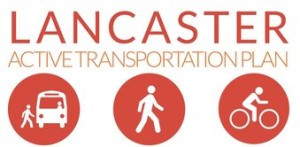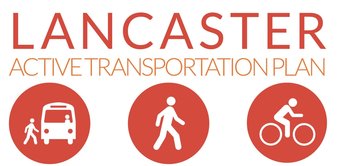
Here is some information about upcoming public events in Lancaster from a press release regarding the Lancaster Active Transportation Plan.Â
The Lancaster County Planning Commission, the City of Lancaster, and the Lancaster Intermunicpal Committee announce a series of upcoming events for the public to review, comment, and learn more about plans to encourage cycling and walking throughout the county. The Lancaster Active Transportation Plan is a joint effort by all three entities to work together to build a network of offroad and on-road cycling facilities as well as expand the system of sidewalks and trails in urban, suburban and rural areas. The network would be designed for both recreation purposes and commuting to and from work. In addition, the plan will seek to coordinate bike and pedestrian facilities with mass transit service provided by RRTA to provide flexibility and alternatives to driving automobiles for short trips.
Active transportation has enormous impacts on both personal health and the quality of life in our communities. Walking and biking reduces the levels of obesity, heart disease, Type 2 diabetes, high blood pressure, stress levels and depression. This results in lower healthcare costs for everyone. Active transportation cuts down on greenhouse gas emissions and global climate change. It can be financially beneficial too. On average, it costs $6,000-$8,000 per year to own and operate a motor vehicle, but only $150 per year for a bicycle. It reduces air pollutants, noise pollution and congestion. And finally, active transportation can help build stronger communities by increasing contact between neighbors and having more “eyes on the street.â€
There are three upcoming events for the public to participate in the planning process. All three events will include general information about the Active Transpiration Plan, but each will have a different focus. The events are as follows:
- Proposed “Goat Path†Trail Open House – Tuesday, April 25th, from 3-5:00 PM, at the Upper Leacock Township War Memorial Building (54 W. Main Street, Leola, PA 17540). This event will focus on the “Goat Path†trail section of the proposed Greater Lancaster Heritage Pathway. This proposed trail project runs from Bareville to Lancaster General Health’s Suburban Pavilion.
- Trails and Greenways Open House – Tuesday, April 25th, from 5-7:00 PM at the Lancaster City Council Chambers (120 N Duke Street, Lancaster, PA 17603). This event will focus on some of the featured trails and greenways in the Active Transportation Plan such as Lancaster City’s NE Greenway section of the Greater Lancaster Heritage Pathway and the Engleside Greenway.
- Lancaster Active Transportation Plan Open Studio – Wednesday, April 26th, from 9:00 AM – Noon, at the Lancaster City Council Chambers (120 N Duke Street, Lancaster, PA 17603). This event will focus on the process of developing the Lancaster Active Transportation Plan and its status.
For more information about the Lancaster Active Transportation Plan, go to www.LancasterATP.com












![Steve, the guy from the videos who tells those punny [funny] jokes](http://ethandemme.com/wp-content/uploads/2015/07/DSCN5662-1024x768.jpg)



